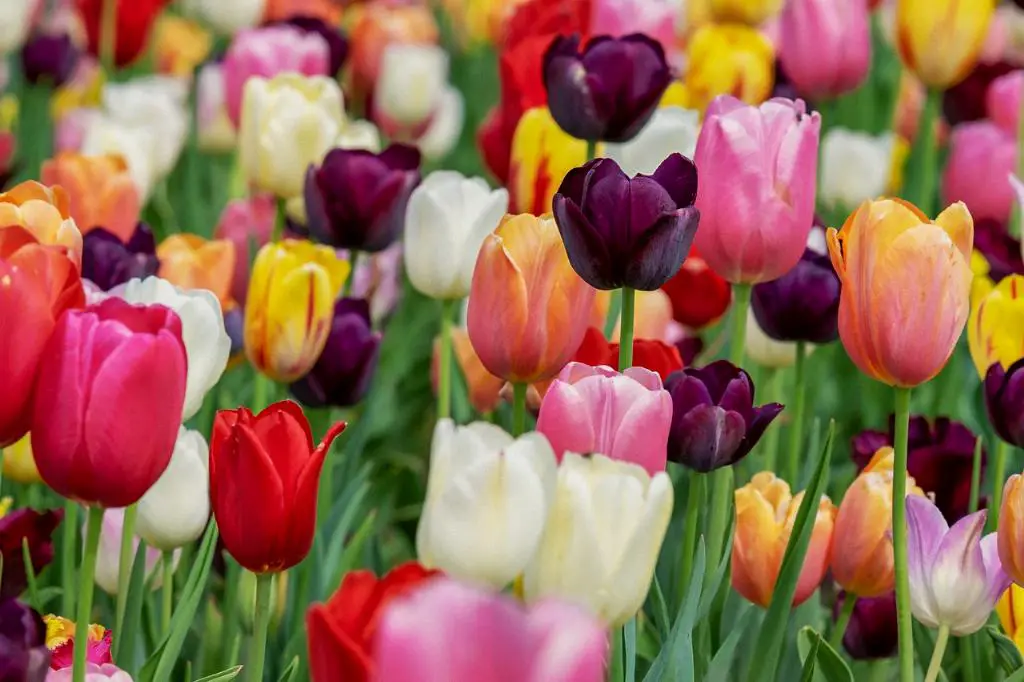Growing tulips can be a rewarding and beautiful experience, adding vibrant colors to your garden. With the right care and attention, you can enjoy beautiful tulips blooming in your garden year after year.
Light Requirements
Tulips thrive best in full sun in northern regions but prefer partial shade in the southern regions. Placing them in an area with adequate sunlight is crucial for their growth and blooming.
Soil Preparation
When planting tulip bulbs, ensure they are placed pointed end up in well-drained soil with a pH level between 6 and 7. If your soil is sandy, adding compost can help improve its quality. For clay soils with poor drainage, amending the soil with compost is also recommended.
Planting Tulip Bulbs
It’s essential to plant tulip bulbs at the right depth and spacing. Dig a hole 4-6 inches deep and place the bulbs in the soil, ensuring they are adequately spaced apart to allow for proper growth.
Watering and Maintenance
After planting, water your tulip bulbs thoroughly to help them establish roots. While they are growing, ensure the soil remains moist but not waterlogged. Once the flowers bloom, deadhead them to encourage further growth.
Fertilizing Tulips
Applying a balanced fertilizer in the spring when the foliage emerges can help promote healthy growth and vibrant blooms. Avoid fertilizing after the flowers have bloomed to prevent excessive foliage growth.
Protecting Against Pests
Keep an eye out for common pests that may affect tulips, such as aphids or slugs. Using natural pest control methods or applying insecticidal soap can help protect your tulips from potential damage.
Winter Care
During the winter months, consider mulching your tulip bulbs to protect them from frost and freezing temperatures. Mulch also helps to insulate the bulbs and prevent them from being damaged during colder weather.
Dividing Tulip Bulbs
Every few years, it’s recommended to divide tulip bulbs to prevent overcrowding and ensure healthy growth. Dig up the bulbs after the foliage has withered and replant them in a different location or share them with other gardeners.
Container Gardening
If you don’t have a garden space, tulips can also be grown in containers. Ensure the containers have good drainage and plant the bulbs at the appropriate depth. Place the containers in a sunny spot and water regularly.
Long-Term Care
To ensure your tulips return year after year, allow the foliage to wither naturally after blooming. Avoid cutting it back before it turns yellow, as this allows the bulbs to store energy for the next growing season.
Enjoying Your Tulips
Once your tulips bloom, take the time to admire their beauty and vibrant colors. Tulips make excellent cut flowers, so consider bringing some indoors to brighten up your home. With proper care and attention, you can enjoy a stunning display of tulips in your garden.

